Refractive Lens Exchange

What is a Refractive Lens Exchange?
Refractive Lens Exchange (RLE), is a vision correction procedure that replaces the eye’s natural lens with an advanced intraocular lens (IOL) to reduce or eliminate the need for glasses or contact lenses. This procedure is also called Custom Lens Replacement. Unlike cataract surgery, which is typically performed once a cataract has significantly impacted vision, this procedure is designed for patients who want to correct their vision before cataracts develop or worsen. By replacing the natural lens with a customized artificial lens, patients can fix their near vision, distance vision, astigmatism, and avoid future cataract formation all in one procedure. After RLE surgery, it is rare for your prescription to change in a noticeable way, making this a definitive fix for your focus. At MVC, this procedure is performed with precision and expertise, helping patients regain clear vision without the hassle of glasses or contacts interfering with their daily lives.
- Safe & Effective
- Minimally Invasive
Why Choose MVC for RLE?
- Vision Correction Specialists: LASIK, SMILE, or advanced lenses—modern vision correction is our exclusive focus.
- All 7 Modern Vision Options: Unlike places that offer only LASIK, we offer all 7 modern laser vision correction options—so you get the procedure that’s right for your eyes.
- In-Depth Eye Exams: Our EyeAnalysis provides the region’s most detailed eye health evaluation—front to back, top to bottom.
- Expert-Certified Team: Our surgeons include fellows certified by the World College of Refractive Surgery and Visual Sciences.
- Exceptional Patient Experience: Relax in our welcoming spa-like clinic—enjoy no wait times and personalized care from start to finish.
- Award-Winning Excellence: Built on Kugler Vision’s patient-first standards—a decade-long Best of LASIK practice winner.

Your Clear Vision Starts Here
Take the first step—see if you're a candidate now.
Meet Your MVC RLE Surgeon
Dr. Drew Dickson is the only World College of Refractive Surgery and Visual Sciences certified vision correction specialist in the state of Iowa. He specializes in LASIK, SMILE, and lens-based procedures, delivering trusted results through precision, experience, and patient-first care.
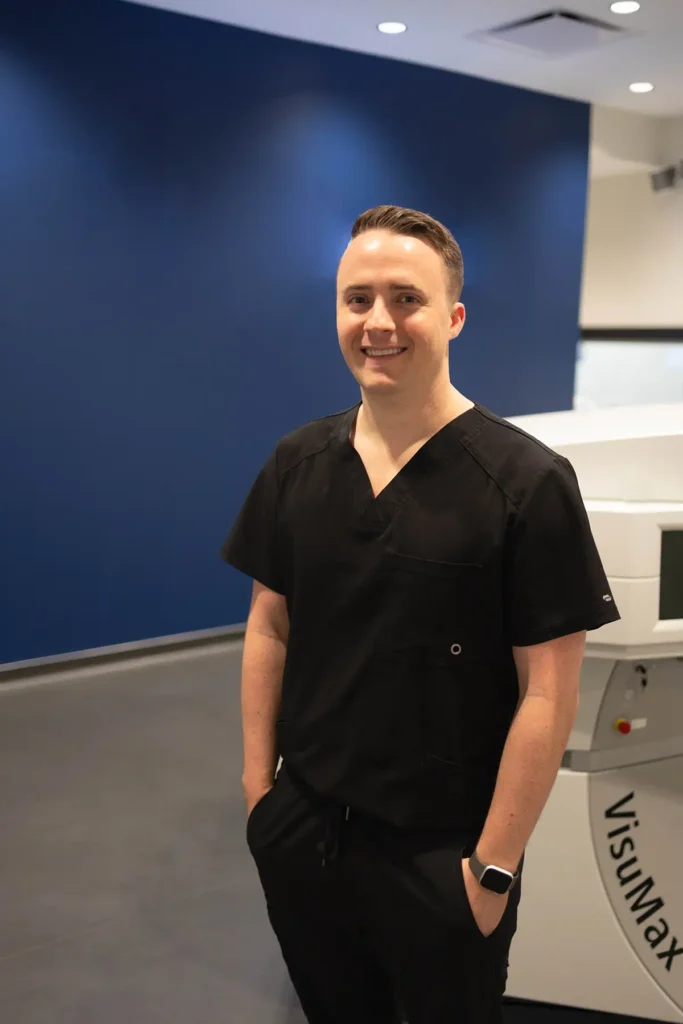
Our RLE Surgery Locations

Who is a candidate for Refractive Lens Exchange?
A good candidate for RLE, is typically over the age of 45 and experiencing reading vision problems, nearsightedness, farsightedness, or astigmatism. This procedure is ideal for those who want to achieve long-term vision correction without relying on glasses or contact lenses. Patients with early signs of lens dysfunction or mild cataracts may also benefit from this surgery, as it replaces the natural lens before significant cataract development. To be eligible, individuals should have generally healthy eyes and be free from conditions such as glaucoma. For many, RLE provides an effective alternative to LASIK, offering the opportunity for clearer vision at multiple distances with advanced intraocular lens options. At MVC, we evaluate each patient’s unique vision needs to determine whether this procedure is the best path to lasting visual freedom.
Benefits of Refractive Lens Exchange
- Corrects prescription errors, including nearsightedness, farsightedness, astigmatism, and reading vision problems
- Eliminates or significantly reduces dependence on glasses and contact lenses at all distances
- Prevents the development of cataracts by replacing the natural lens with an artificial intraocular lens
- Offers fast visual recovery and predictable, stable results
- Can be a great alternative for those who are not candidates for LASIK or other laser vision correction procedures
- Uses advanced intraocular lenses that provide clearer vision for both near and far distances
- Enhances lifestyle by allowing greater freedom from eyewear for daily activities
- Eliminates the need for future cataract surgery, ensuring good vision for years to come

RLE Lens Options
During Refractive Lens Exchange surgery at MVC, the choice of intraocular lens (IOL) is tailored to each patient's specific vision needs, lifestyle, and goals. Dr. Dickson will recommend the most suitable lens option based on factors such as refractive error and desired visual outcomes. Several types of IOLs are available to provide clear vision at varying distances and correct different vision conditions.
Light Adjustable Lenses

Light Adjustable Lenses (LALs) are made from a special photo-sensitive material that allows the power of the lens to be adjusted after surgery using ultraviolet (UV) light. This technology offers a high level of customization, increasing the chances of achieving optimal vision correction. While commonly used in cataract surgery, LALs can also be a beneficial option for patients undergoing RLE who want precise, post-surgical adjustments to their vision.
Toric Lenses

Extended Depth of Focus (EDOF) IOLs
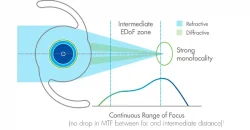
Multifocal & Trifocal Lenses
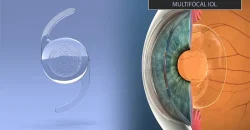
Multifocal and trifocal lenses are designed for patients who want to minimize their dependence on glasses for both near and distance vision, and do the best job at providing a full range of vision. Unlike monovision correction, which sets one eye for distance and the other for near, multifocal and trifocal lenses split incoming light, allowing the eye to focus on multiple distances simultaneously. This lens type is particularly beneficial for individuals with reading vision problems, helping to restore clear vision at a range of distances.
Blended Vision IOLs
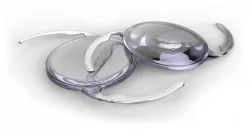
At MVC, the right IOL choice is based on a detailed evaluation of each patient’s vision needs. With a range of advanced lens options available, RLE can provide long-term clarity and reduce or eliminate the need for corrective eyewear.
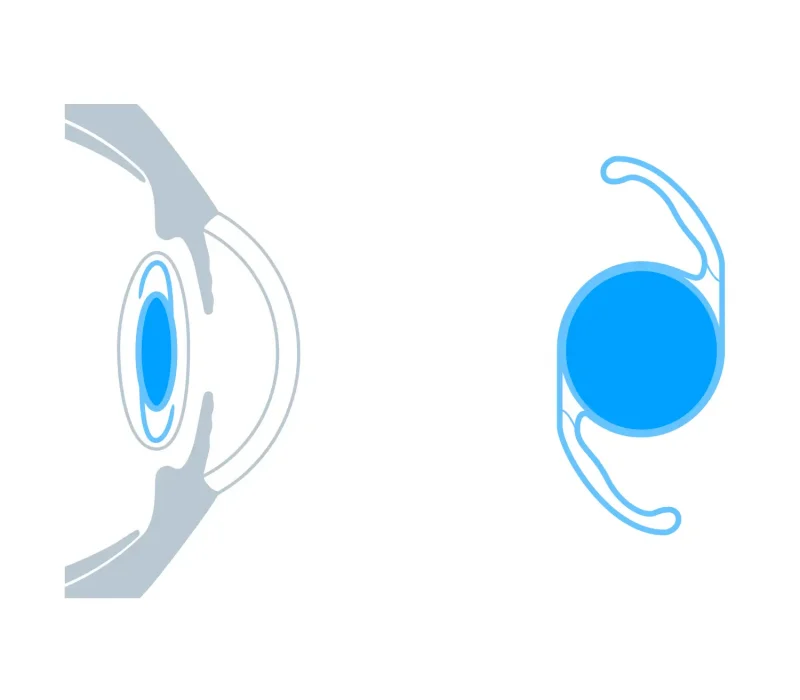
How does RLE work?
RLE is an outpatient procedure designed to replace the eye’s natural lens with an artificial intraocular lens (IOL) to correct vision. It’s similar to cataract surgery. The process begins with a consultation at MVC, where an experienced refractive surgeon will assess your vision, discuss your goals, and determine if this procedure is right for you. If you are a candidate, we will provide pre-procedure guidelines and schedule surgery, typically performing the procedure on both eyes on the same day.
During the procedure, your eyes will be numbed with anesthetic drops, and a mild sedative will be offered to keep you comfortable. The surgery itself is similar to cataract surgery and involves making a small incision at the edge of the cornea. Through this incision, the natural lens is carefully broken up using advanced laser and ultrasound technology and then removed. A customized artificial lens is then inserted in its place, unfolding to restore clear vision. The incision is self-sealing and does not require stitches. The entire procedure usually takes 10-15 minutes per eye.
our reviews
Our Patients Love What We Do
Hear from real patients whose lives have been transformed by clearer vision and compassionate, expert care at MVC.
The MVC team are top professionals! They thoroughly explained my options and helped me feel completely confident in my decision. My vision is now better than ever.
Marilyn B.
RLE Patient
Modern Vision Correction was incredible from the moment I walked in. The LASIK surgery was fast, painless, and I had perfect vision the very next day. Can’t believe I waited this long.
Matthew M.
LASIK Patient
Dr. Dickson and his team got me in quickly for LASIK, made the process easy, and I’m seeing 20/15 now. Absolutely amazing!
Ellie R.
LASIK Patient

RLE: What to Expect
On the day of your RLE at MVC, you’ll arrive knowing you’re in expert hands. The procedure is quick and painless, and you’ll be on your way home within a few hours – be sure to have a friend or family member ready to drive you. You’ll need to wear a protective shield while sleeping the first night and use prescription eye drops to support healing. Some mild dryness, itching, or blurriness is normal at first, but most patients notice an improvement in their vision within days. Temporary glare or halos may occur as your eyes adjust, but these effects fade over time.
Most patients feel comfortable driving the next day and return to their normal routines within 48 hours. Swimming, eye makeup, and any activities that may increase the likelihood of getting hit in the eye should be avoided for 1 week. Your vision will continue to refine in the following weeks, with final results stabilizing within a couple of months. At MVC, our goal is to provide long-term visual freedom by reducing or eliminating the need for glasses or contacts. An added bonus? You’ll never have to worry about cataracts in the future. With high patient satisfaction and life-changing results, RLE at MVC is a step toward clear, hassle-free vision.
What is the difference between RLE and Cataract Surgery?
RLE and cataract surgery are similar procedures in that both involve removing the eye’s natural lens and replacing it with an artificial intraocular lens (IOL). The key difference is the reason for surgery. Cataract surgery is performed when the natural lens becomes cloudy and yellow with age, interfering with vision by preventing light from passing clearly to the retina. RLE is performed before cataracts develop or progress, primarily to correct refractive errors such as nearsightedness, farsightedness, astigmatism, or presbyopia. While cataract surgery is necessary to restore clear vision once cataracts form, RLE is an elective procedure for those seeking long-term vision correction and freedom from glasses or contacts. At MVC, this advanced procedure offers patients a proactive solution, eliminating the need for cataract eye surgery in the future while enhancing vision at all distances.

FAQ's About RLE
What is the age limit for RLE surgery?
RLE, is generally recommended for individuals over 45 who are experiencing difficulty with reading, early cataracts, or other vision changes that impact their everyday life. There is no strict upper age limit, but a comprehensive exam is necessary to determine candidacy. Factors such as overall eye health, the presence of other conditions like glaucoma, and previous refractive surgery play a role in determining if this procedure is the right fit. At MVC, we evaluate each patient individually to ensure the best possible outcome for long-term vision improvement.
How is RLE different from LASIK?
Will RLE allow me to get rid of my reading glasses?
Is RLE surgery painful?
Patients typically experience little to no pain during RLE surgery. The procedure is performed with local anesthesia in the form of numbing eye drops to ensure comfort. Some patients may feel slight pressure, but the surgery itself is quick, lasting about 10 to 15 minutes per eye and only requires a very tiny micro surgical incision. Mild discomfort, dryness, or sensitivity to light may occur during recovery but can be easily managed. At MVC, we prioritize patient comfort throughout the process, ensuring a smooth and stress-free experience.
Is Refractive Lens Exchange permanent?
Yes, RLE provides permanent vision correction by replacing the eye’s natural lens with an artificial one. Unlike LASIK or photorefractive keratectomy (PRK), which modify the cornea, RLE eliminates the possibility of cataract formation in the future. Because the lens implant does not age or degrade over time, patients enjoy permanent vision benefits. At MVC, we use state-of-the-art intraocular lenses to provide clarity and stability for years to come.
Will both eyes be treated at the same time?
RLE surgery is typically performed on both eyes on the same-day to provide a more convenient experience for our patients. Patients at MVC receive personalized care throughout the process, including detailed post-operative instructions to ensure optimal recovery and results.
How long does a lens replacement procedure take?
The actual surgical procedure for RLE usually takes less than 15 minutes per eye. Patients remain awake but comfortable with the help of mild sedation and local anesthesia. Since there are no surgical sutures required, the recovery process is typically smooth, and most patients notice an improvement in vision within a few days. MVC’s expert team ensures a seamless experience from pre-surgical preparation to post-operative care.
What are the risks of RLE surgery?
As with any surgical procedure, RLE carries some risks, though complications are rare. Everyone will need to have their lenses replaced and face the rare risks of RLE or cataract surgery at some point, but the benefit of RLE is enjoying excellent vision for decades longer than patients who wait for cataracts to develop. Potential risks include dry eyes, glare, halos around lights, or a temporary decrease in visual acuity during the healing process. More serious risks such as infection or retinal detachment are extremely rare. A proper diagnosis through a thorough exam helps identify any pre-existing conditions that may impact the outcome. At MVC, we conduct a detailed evaluation before surgery and closely monitor patients afterward to minimize risks and achieve the best possible results.
What activities should be avoided after RLE surgery?
Patients should avoid wearing eye makeup, swimming, and activities increasing the risk of getting hit in the eye for at least a week after surgery to prevent complications. It’s also important to limit exposure to dust and wind and avoid rubbing the eyes during the healing process. Many daily activities, such as reading, watching TV, and using a computer, can be resumed the day of surgery. At MVC, we provide detailed post-operative guidelines to ensure a smooth recovery and lasting vision improvement.
Can you have RLE surgery if you had LASIK?
Yes, patients who have previously undergone LASIK often make great candidates for RLE. Because RLE addresses vision at the lens level rather than the cornea, prior refractive surgery does not disqualify someone from the procedure. Certain IOLs, like the Light-Adjustable Lens, are preferred in patients with prior vision correction surgery. A comprehensive evaluation, including corneal topography and an exam, will help determine if RLE is the best option. MVC specializes in assessing complex vision histories to provide the most effective treatment for long-term clarity.
Start Your Journey to Visual Freedom
Your path to clearer, sharper vision begins with a personalized approach designed to meet your unique eyes and lifestyle.
STEP 1
Initial Exam
STEP 2
Custom Procedure
Your vision correction procedure is tailored to your eye’s anatomy, using cutting-edge technology for precision and optimal results.
STEP 3




